
How to Use Soil Moisture Sensor Module: Examples, Pinouts, and Specs
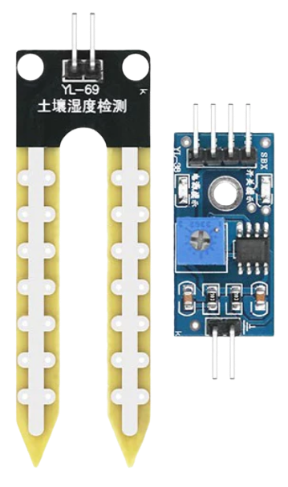
 Design with Soil Moisture Sensor Module in Cirkit Designer
Design with Soil Moisture Sensor Module in Cirkit DesignerIntroduction
The Soil Moisture Sensor Module is a device designed to measure the volumetric water content in soil. It provides real-time data that can be used for irrigation management, plant health monitoring, and various agricultural or gardening applications. Manufactured by Arduino, this module (Part ID: UNO) is widely used in smart farming, automated irrigation systems, and environmental monitoring projects. Its ease of use and compatibility with microcontrollers like the Arduino UNO make it a popular choice for both hobbyists and professionals.
Explore Projects Built with Soil Moisture Sensor Module
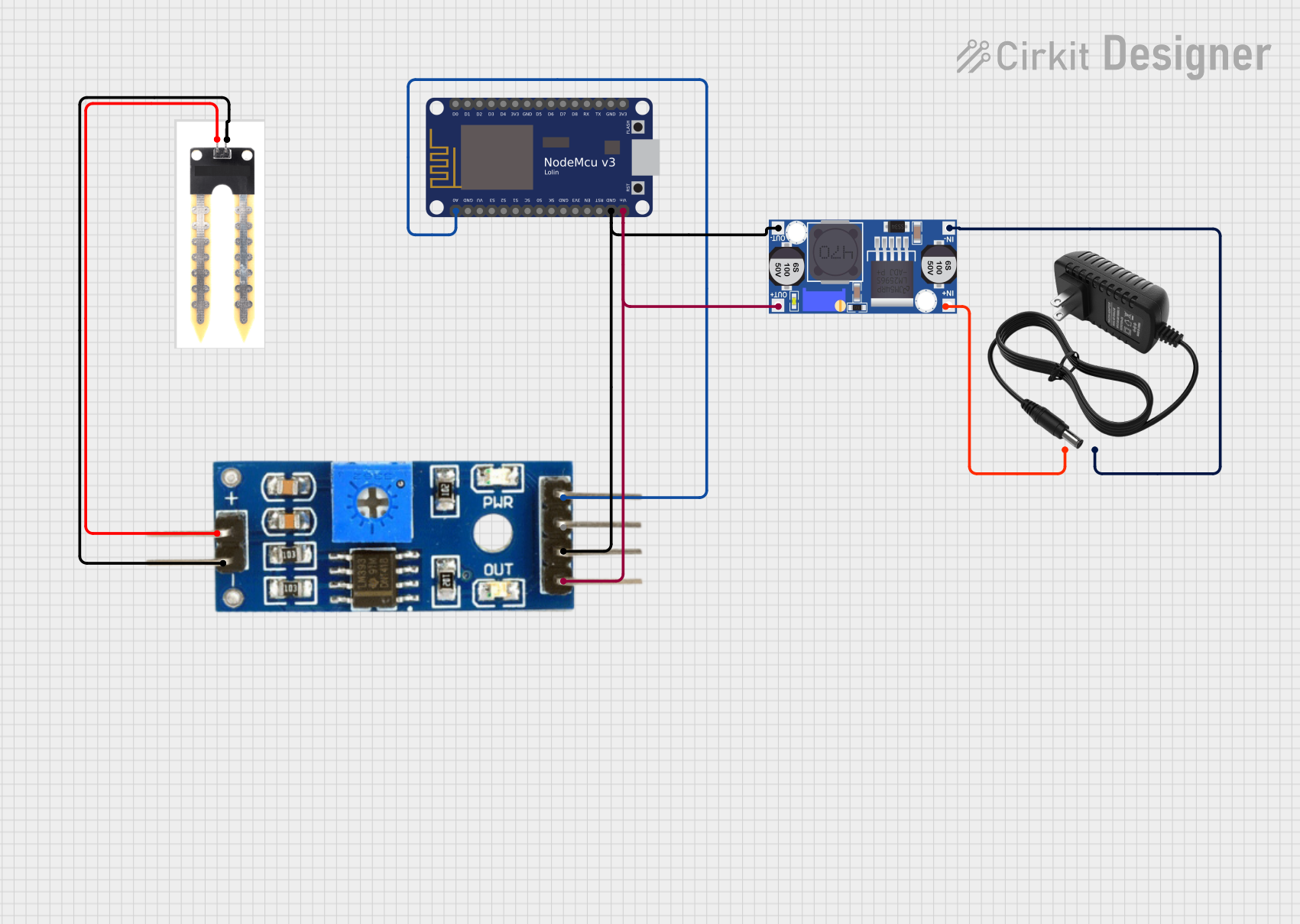
 Open Project in Cirkit Designer
Open Project in Cirkit Designer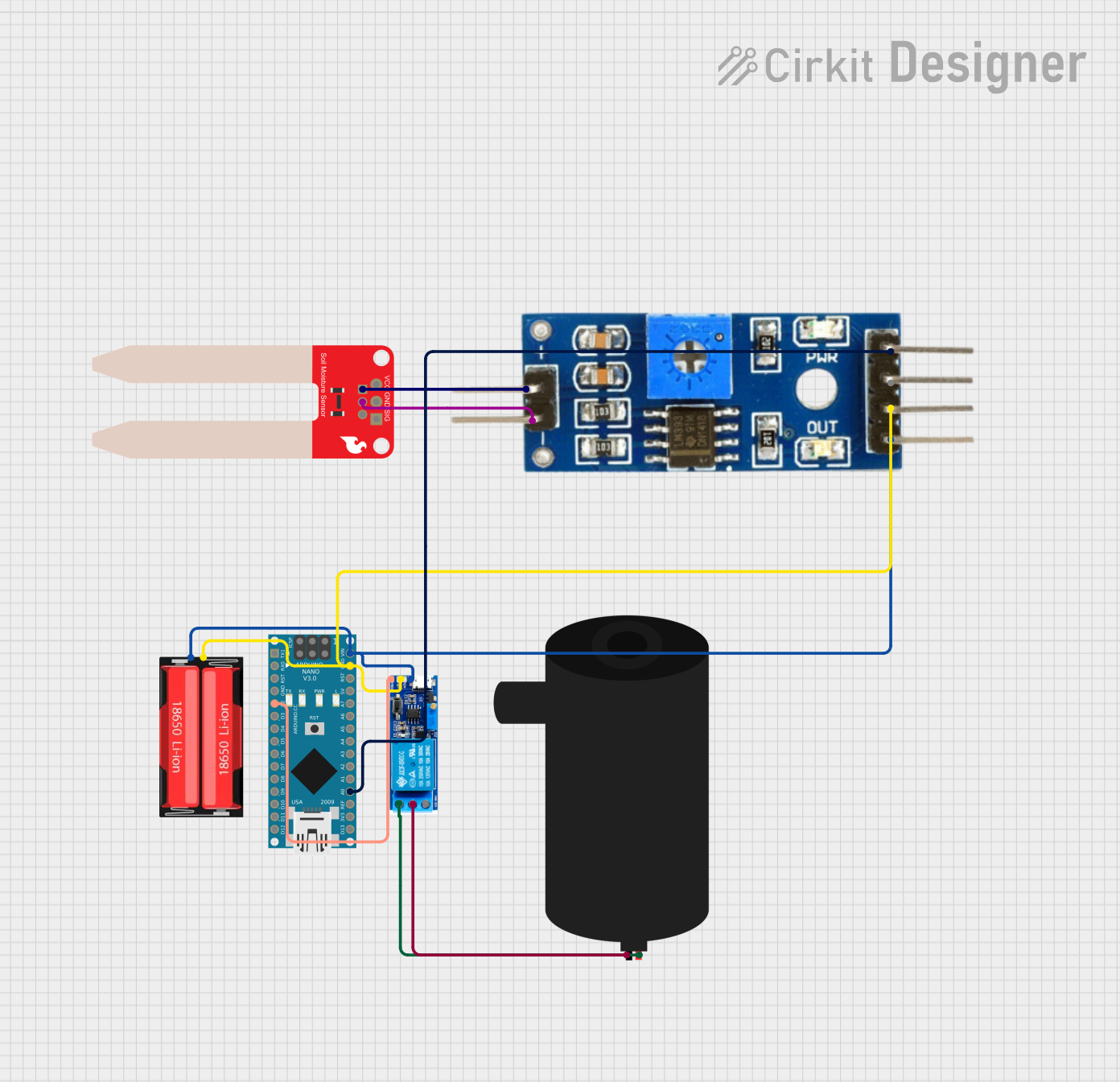
 Open Project in Cirkit Designer
Open Project in Cirkit Designer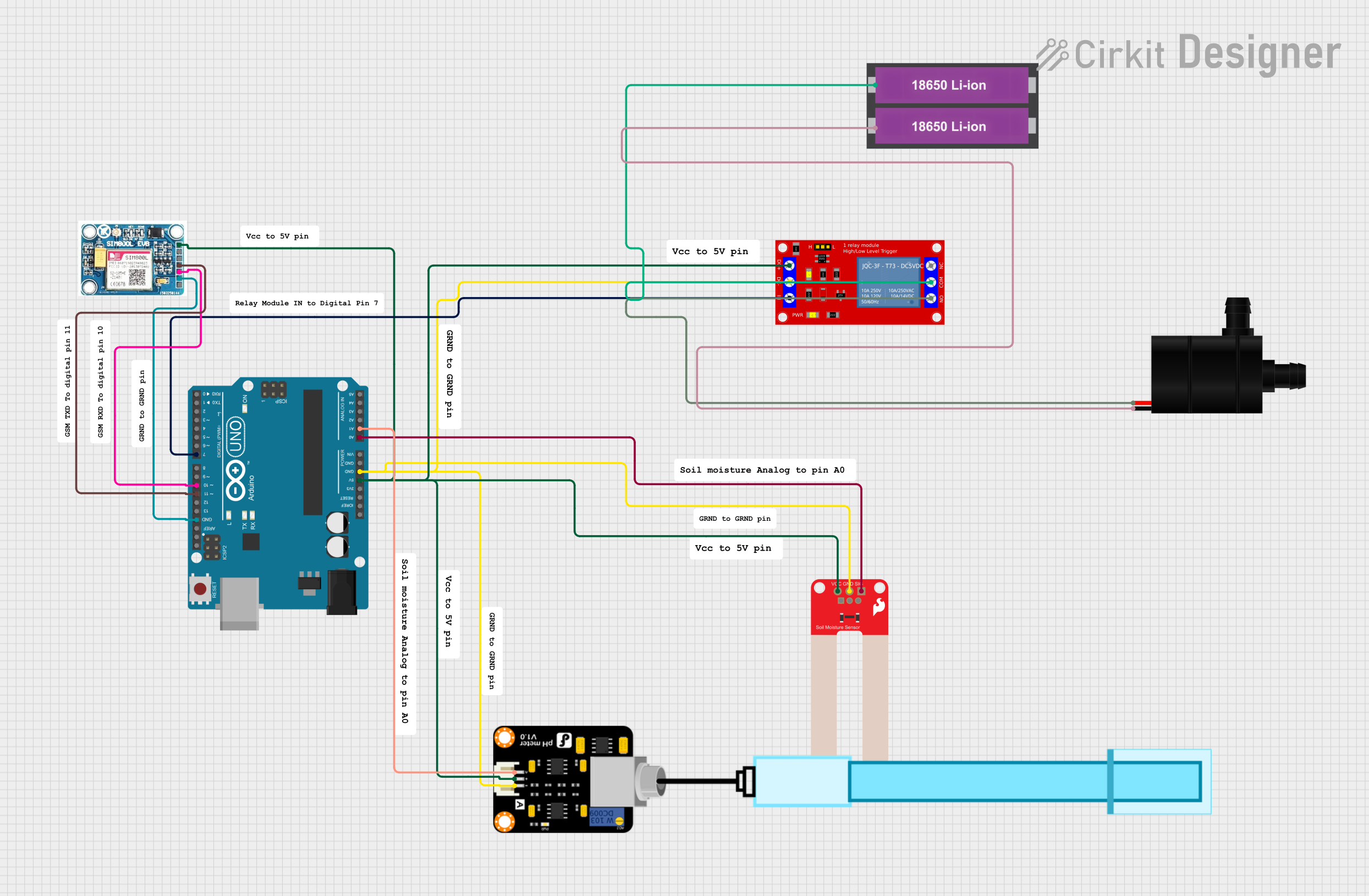
 Open Project in Cirkit Designer
Open Project in Cirkit Designer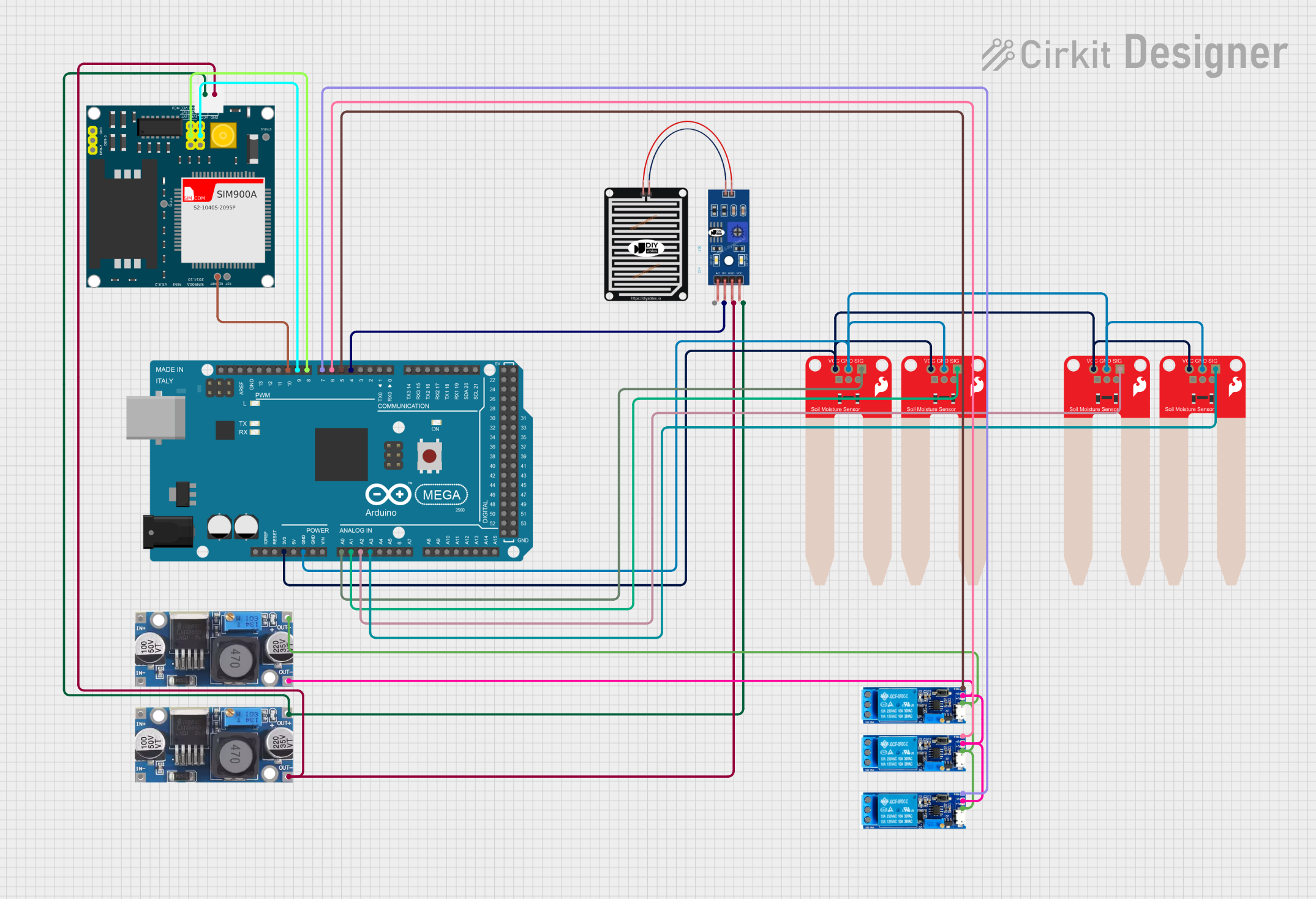
 Open Project in Cirkit Designer
Open Project in Cirkit DesignerExplore Projects Built with Soil Moisture Sensor Module

 Open Project in Cirkit Designer
Open Project in Cirkit Designer
 Open Project in Cirkit Designer
Open Project in Cirkit Designer
 Open Project in Cirkit Designer
Open Project in Cirkit Designer
 Open Project in Cirkit Designer
Open Project in Cirkit DesignerTechnical Specifications
The following table outlines the key technical details of the Soil Moisture Sensor Module:
| Parameter | Specification |
|---|---|
| Operating Voltage | 3.3V - 5V |
| Output Type | Analog and Digital |
| Current Consumption | < 20mA |
| Analog Output Range | 0V (dry soil) to 5V (wet soil) |
| Digital Output | High (wet) or Low (dry) |
| Dimensions | 60mm x 20mm x 5mm |
| Operating Temperature | -10°C to 60°C |
Pin Configuration and Descriptions
The Soil Moisture Sensor Module has four pins, as described in the table below:
| Pin Name | Type | Description |
|---|---|---|
| VCC | Power | Connect to 3.3V or 5V power supply. |
| GND | Ground | Connect to the ground of the power supply. |
| A0 | Analog Out | Outputs an analog voltage proportional to the soil moisture level. |
| D0 | Digital Out | Outputs a HIGH or LOW signal based on the soil moisture threshold (adjustable). |
Usage Instructions
How to Use the Component in a Circuit
Wiring the Sensor:
- Connect the
VCCpin to the 5V pin of the Arduino UNO. - Connect the
GNDpin to the GND pin of the Arduino UNO. - Connect the
A0pin to an analog input pin (e.g., A0) on the Arduino UNO. - Optionally, connect the
D0pin to a digital input pin if you want to use the digital output.
- Connect the
Adjusting the Threshold:
- The module includes a potentiometer to adjust the sensitivity of the digital output.
- Turn the potentiometer clockwise to increase sensitivity (detects wetter soil) or counterclockwise to decrease sensitivity.
Reading the Output:
- Use the analog output (
A0) for precise moisture level readings. - Use the digital output (
D0) for a simple HIGH/LOW signal indicating wet or dry soil.
- Use the analog output (
Important Considerations and Best Practices
- Avoid submerging the sensor completely in water, as it is designed for soil use only.
- Prolonged exposure to wet conditions may cause corrosion. Consider using corrosion-resistant versions for long-term projects.
- Calibrate the sensor for your specific soil type to improve accuracy.
- Use pull-up or pull-down resistors if necessary when connecting the digital output to a microcontroller.
Example Code for Arduino UNO
Below is an example code snippet to read data from the Soil Moisture Sensor Module using an Arduino UNO:
// Define the analog and digital pins connected to the sensor
const int analogPin = A0; // Analog output pin of the sensor
const int digitalPin = 2; // Digital output pin of the sensor
void setup() {
Serial.begin(9600); // Initialize serial communication
pinMode(digitalPin, INPUT); // Set digital pin as input
}
void loop() {
// Read the analog value from the sensor
int analogValue = analogRead(analogPin);
// Read the digital value from the sensor
int digitalValue = digitalRead(digitalPin);
// Print the analog value to the Serial Monitor
Serial.print("Analog Value: ");
Serial.println(analogValue);
// Print the digital value to the Serial Monitor
Serial.print("Digital Value: ");
Serial.println(digitalValue);
// Add a delay for readability
delay(1000);
}
Troubleshooting and FAQs
Common Issues and Solutions
No Output or Incorrect Readings:
- Cause: Loose or incorrect wiring.
- Solution: Double-check all connections and ensure the sensor is powered correctly.
Corrosion on the Sensor Probes:
- Cause: Prolonged exposure to wet soil or water.
- Solution: Use a corrosion-resistant sensor or clean the probes regularly.
Unstable Readings:
- Cause: Electrical noise or poor calibration.
- Solution: Add a capacitor between the
VCCandGNDpins to reduce noise. Calibrate the sensor for your specific soil type.
Digital Output Always HIGH or LOW:
- Cause: Incorrect threshold setting.
- Solution: Adjust the potentiometer to set the desired moisture threshold.
FAQs
Q1: Can this sensor be used for hydroponics?
A1: No, this sensor is designed for soil use and may not provide accurate readings in water or hydroponic systems.
Q2: How do I protect the sensor from corrosion?
A2: Use a corrosion-resistant version of the sensor or apply a protective coating to the probes.
Q3: What is the lifespan of the sensor?
A3: The lifespan depends on usage and environmental conditions. Regular cleaning and proper use can extend its life.
Q4: Can I use this sensor with a Raspberry Pi?
A4: Yes, the sensor can be used with a Raspberry Pi. However, you may need an ADC (Analog-to-Digital Converter) to read the analog output.